Succession Cropping - Our 2021 Garden Plan
Last week I touched on succession sowing and said I would include my plan for this year and, being very organised these days (new years resolution), I am pleased to include it below. Not all of the plan may be executed as weather, time, losses or waning new years resolutions get in the way but it is very worthwhile to work this out now, it will make the growing year much easier to manage. I didn't get a chance to draw up the polytunnel version but will add it next week if anyone's interested.
Essentially succession cropping is filling any empty spaces in the garden with fresh crops once the previous ones have been harvested. Not only does the practice make your garden more productive, it also keeps the soil covered and protects it from the elements while also shading out weeds.
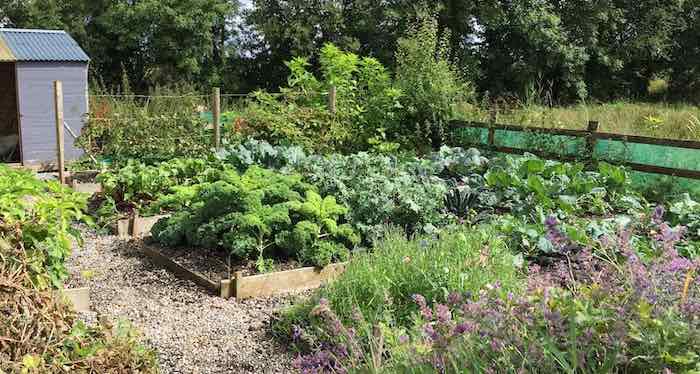
Some vegetables (e.g. maincrop potatoes planted in March and harvested in October/November) will require space for the full season while others e.g. garlic or early potatoes will be harvested in summer when there is still enough time in the growing year to put in something else. Plants that overwinter like purple sprouting broccoli (seed is sown in mid June in modules and planted out in mid July) can be preceded by a range of crops including salads, potatoes, broad beans, early onions or garlic.
Below we can see my outdoor garden plan, I hope you can make sense of it. I have included my primary crops in each bed with the follow on crop displayed in the circle underneath. I have quite a large garden with more space than I need so this is an unstressed plan. There are opportunities to squeeze in some more fast growing crops (e.g. radish or lettuce) here and there but I wanted to keep it relatively simple. In almost all cases I am planting plug plants (modules) which I will have sown beforehand, the only exception is winter carrots which are sown direct.
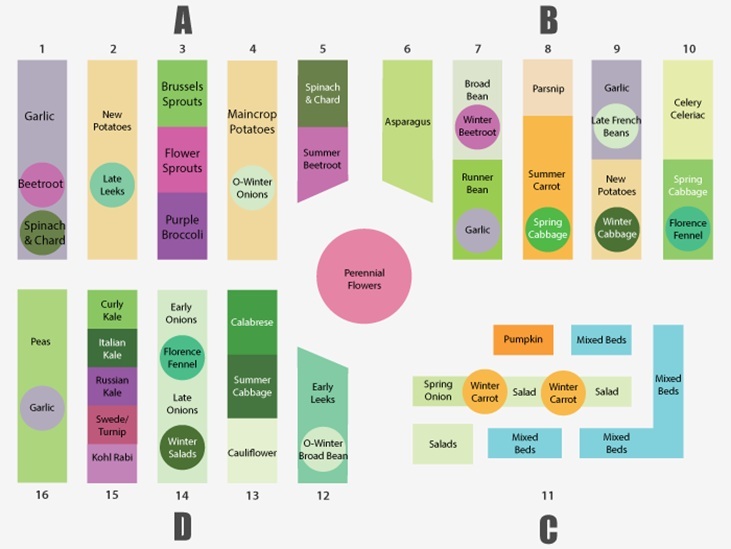
Section C11 - Spring/Summer salads will be replaced in June with direct sown winter carrots. The other beds in this section are mixed beds which are treated in a haphazard way, if there's a gap I'll stick something spare in.
Section D 12 - Early leeks harvested in October are followed by overwintering broad beans for harvest the following Spring. 13 - Calabrese is relatively fast growing for a cabbage family plant and will probably have it's first harvest in June, I will likely swap with the salad bed in the mixed section for a second crop. Summer cabbage and Cauliflower will use the bed for the full year. 14 - Early onions harvested in June are replaced by Florence fennel, late onions harvested in July/August are followed with Oriental salad crops 15 - 3 x kale varieties use the bed for the full season as does swede. Turnip and Kohl rabi are faster growing and will be likely be followed by chicory and endive. 16 - Peas finished in September are followed in October by garlic which is harvested the following summer.
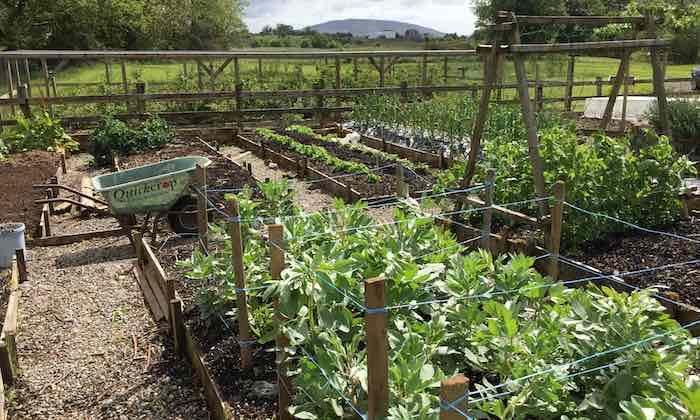
A note on crop rotation Crop rotation, if you are new to the concept, is the practice of changing the location of crops every season so you are not growing the same plant in the same place year after year. The point is to avoid the build of pests or disease associated with that crop and to prevent the depletion of nutrients in the soil. It is a subject that causes anxiety for some gardeners and, if you are one of those people, I'm sure the idea of succession cropping is your worst nightmare. For these folks I would like to make the following points:
Crop rotation is a practice borrowed from farming, it is designed to address soil fertility and pest and disease build up on land where the same crop was grown over long periods of time. Crop rotation makes good sense and, while it should also be observed in the vegetable garden, it does not need to be rigidly followed. My own rotations are fluid and don't stick to a strict 3 or 4 year plan; crops always move around but the intervals can vary in length depending on how the cards fall.
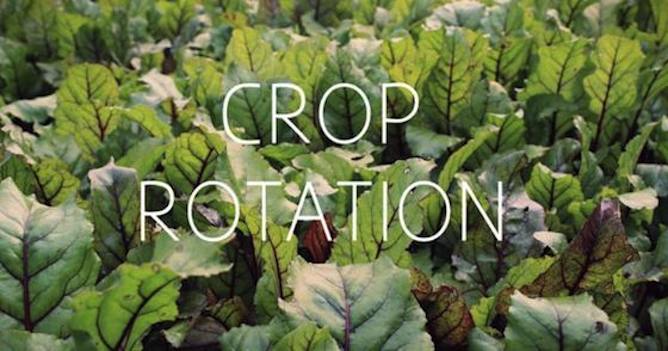
Succession cropping actually lends itself to rotation without having think about it, in many cases the growing season doesn't allow a second sowing of the same crop so you need to find an alternative plant anyway. Succession sowing also needs a little (only a little!) planning so you are more likely to have a record of your crop locations for the following year.
The key plants to look out for are members of the brassica family (Brussel's sprouts, cabbage, cauliflower, calabrese, kale, turnip, swede), predominantly because for the disease clubroot and alliums (onions, garlic, chives, scallions) because of white rot. Potatoes will need at a least a year gap to make sure any possible blighted potatoes in the ground are removed. You can be more relaxed about the other crops which are unlikely to suffer any adverse effects if they end up back in the same place every now and then.
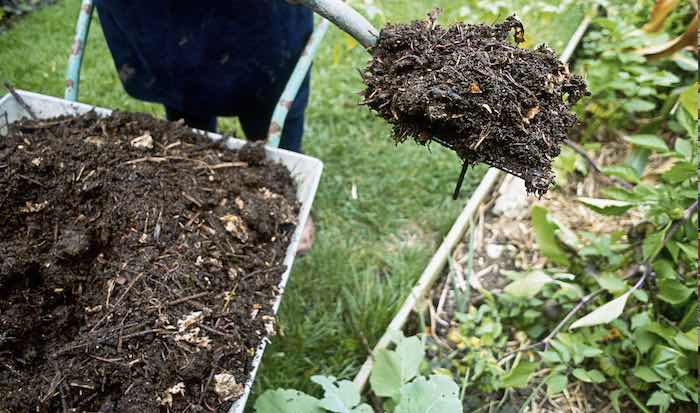
As we've said, crop rotation is designed to avoid pest and disease build up and nutrient deficiencies in the soil. If, however, you keep your beds very fertile by adding plenty of rotted manure or garden compost to the soil surface, you are unlikely to have any nutrient issues. You will also find pest and disease build up will be significantly less in healthy soil with good structure so, again, you can take a more cavalier approach to plant placement.
The 'no dig' (or 'no diggidy' if you are Blackstreet feat. Dr.Dre) approach where heavy yearly dressings of compost or well rotted manure are placed on top of un-dug soil has also been shown to significantly reduce disease. The reasons are as yet unclear but it is thought that the mycorrhizal fungal networks in the soil (which are broken up from digging) play a greater role in plant health than we thought. I read a comment recently on Charles Dowdings excellent site (Mr. No Dig) that a gardener with a long term club root problem found it disappeared after practicing 'no dig' for a few years.
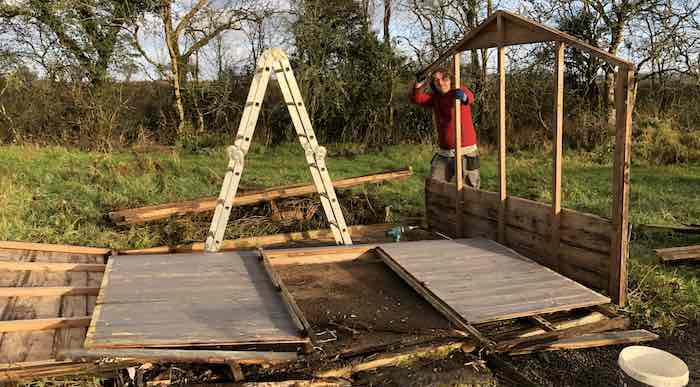
Speaking of fertile soil... Fertile soil is all about adding plenty of well rotted organic matter to the garden. If you can do that, most crops will grow away without any trouble. The key to this system is the compost heap where waste from your kitchen, your garden or wherever else you can get it can be transformed into a truly magical soil conditioner and plant feed.
Due to high rainfall in my area, my compost bins never performed as well as they could so I have decided to build a roofed composting structure to do the job properly. Above you can see Ross taking down my old potting shed to make way for my new facility.

You will be seeing a lot of the new structure (above) as it will also double as a potting/demonstration area in our new course videos. I have gone to town on size (it consists of 6 x 1.5m square bays) so I can process plenty of material including spent hops from a local brewery, seaweed, cow manure and waste woodchip from the sawmills. I will go into all this in detail in a later mail as it is a fascinating subject and will also include trials of our hot composters and worm bins. I am sure you can't wait.
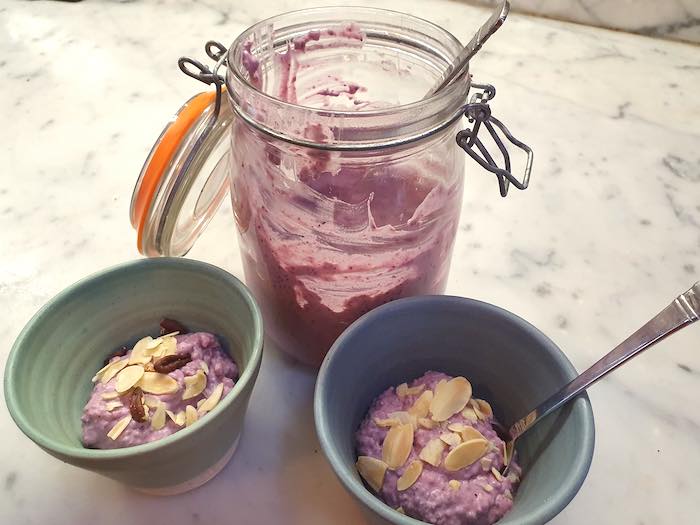
Functional Nutrition Basics Part 2 – Digestion This week's article in our 6 part nutrition basis series covers digestion where Siobhan looks at the common causes and symptoms of poor digestion and how to avoid them. Also included is Siobhan's very easy to make chia pudding recipe which is a fantastic sweet option containing omega 3 fats, protein and fibre. No guilt there!
To read this article and learn how to make 5 minute chia pudding please click the blue button below.
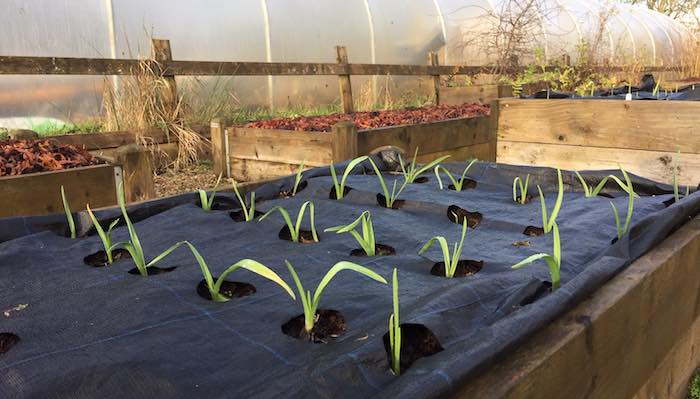
Mypex & Gro-Grid As we are still in garlic planting season and will be planting onions soon I thought I would mention our Gro-Grid planting mats. I am a big fan of the 'Growgrid' range of planting mats (so much so that we aquired the company) which I find particularly good for onions and garlic. 'Growgrid' can also be used for wider spaced vegetables as it is available 4 different size grid options so can be used with almost any crop.
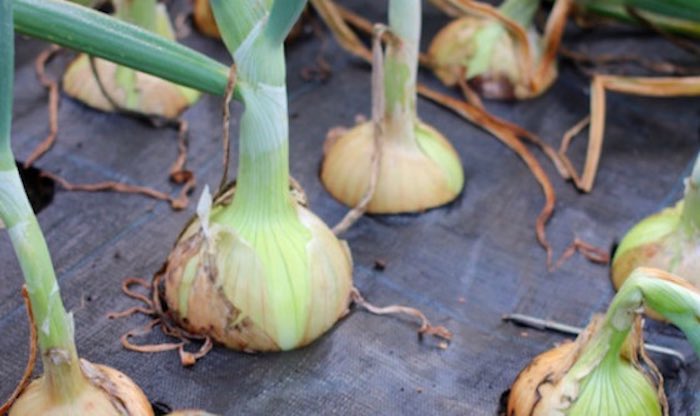
The concept is a simple one where a weed block mat is punched with heat sealed planting holes. Once the mat is in place it virtually eliminates weeding and provides a protective covering for your beds. We have found this to be a fantastic product.
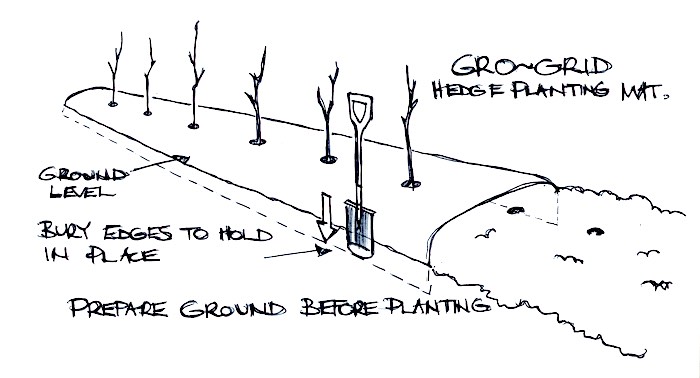
Hedge Growing Mats We also manufacture a hedge growing mat 1m wide with holes spaced every 320cm (approx a foot) apart. This mat is ideal for planting a bare root hedge (which you do now) as it removes competition from weeds while the hedge becomes established.
That's it for now. I'll see you next week!
Andrew
